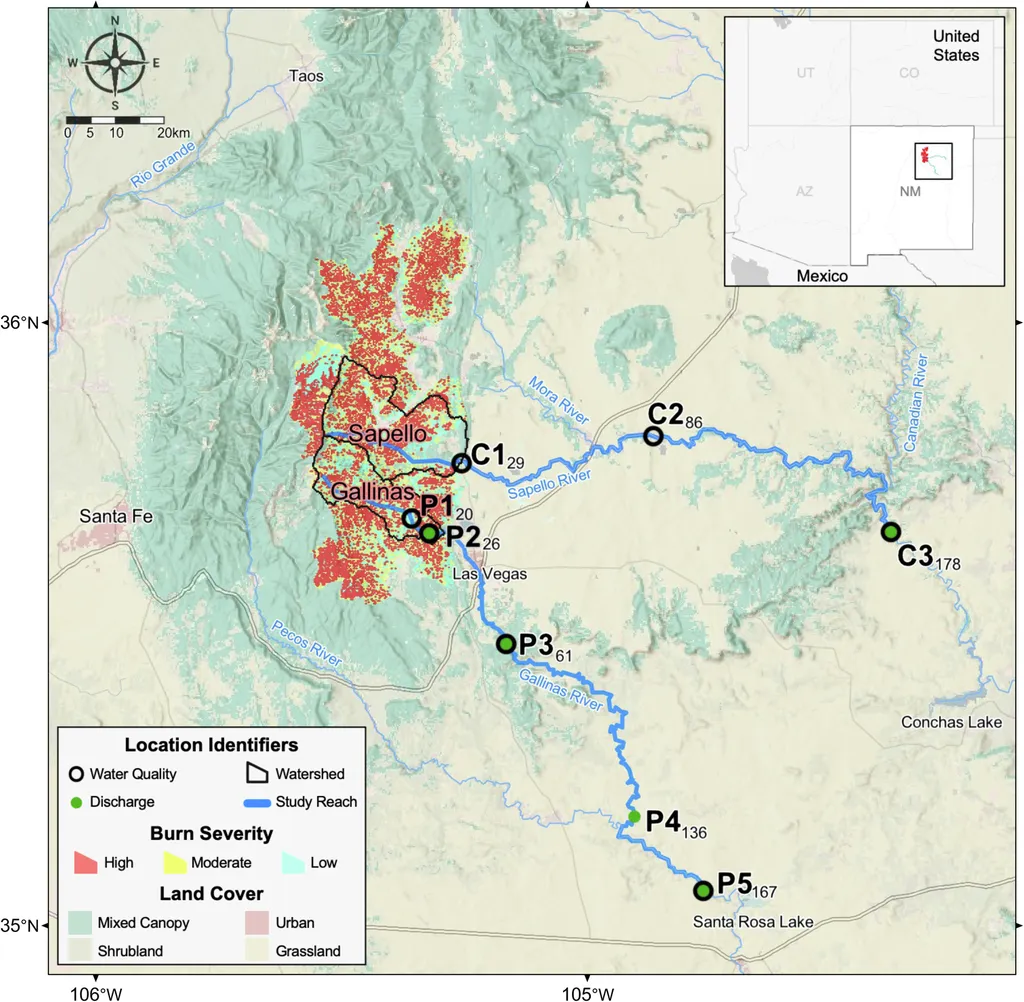In the aftermath of the devastating Hermit’s Peak-Calf Canyon (HPCC) wildfire, the largest wildfire in New Mexico’s history, researchers have uncovered critical insights into how such events can dramatically alter water quality, with significant implications for industries like energy that rely on consistent water supplies. A recent study published in *Frontiers in Water* (translated to English as “Frontiers in Water”), led by Paige Tunby from the Gerald May Department of Civil, Construction and Environmental Engineering at the University of New Mexico, sheds light on the complex interplay between wildfires and water quality dynamics.
The research, which deployed high-resolution sensors along a 160-kilometer stretch of the fluvial network affected by the HPCC wildfire, revealed stark contrasts in water quality behavior depending on proximity to the burn area and the timing of post-fire runoff events. Near the burn zone, water quality parameters such as turbidity and dissolved oxygen levels were found to be severely impacted, with turbidity reaching levels as high as 8,500 Formazin Nephelometric Units (FNU) and dissolved oxygen dropping below regulatory thresholds. These extreme conditions, which pose risks to both ecosystems and human communities, were largely driven by the size of storm events and seasonal variability.
“Traditional discrete sampling methods often miss these acute impacts,” Tunby explained. “Our high-frequency monitoring approach allowed us to capture the full extent of these fluctuations, which is crucial for understanding and mitigating the risks associated with post-fire water quality.”
Further downstream, the study found that solute export behavior was more influenced by longer-term factors such as time since the fire and vegetation recovery metrics. This spatial variability in concentration-discharge (C-Q) relationships underscores the need for adaptive, spatially targeted watershed management strategies.
For the energy sector, which often relies on consistent water quality for operations such as cooling and hydraulic fracturing, these findings are particularly relevant. “Understanding how wildfires affect water quality can help energy companies anticipate and mitigate potential disruptions to their water supplies,” Tunby noted. “This research highlights the importance of investing in high-frequency monitoring technologies to better manage water resources in fire-prone regions.”
The study also emphasizes the need for longitudinal monitoring to detect and anticipate wildfire-induced water quality risks. As wildfires become more frequent and severe due to climate change, such insights will be invaluable for developing more resilient and adaptive water management strategies.
By providing a clearer picture of how wildfires influence water quality dynamics, this research not only advances our scientific understanding but also offers practical guidance for industries and policymakers working to safeguard water resources in the face of increasing environmental challenges. As Tunby and her colleagues continue to explore these dynamics, their work is poised to shape future developments in water quality monitoring and management, ultimately contributing to more sustainable and resilient water resources for all.

